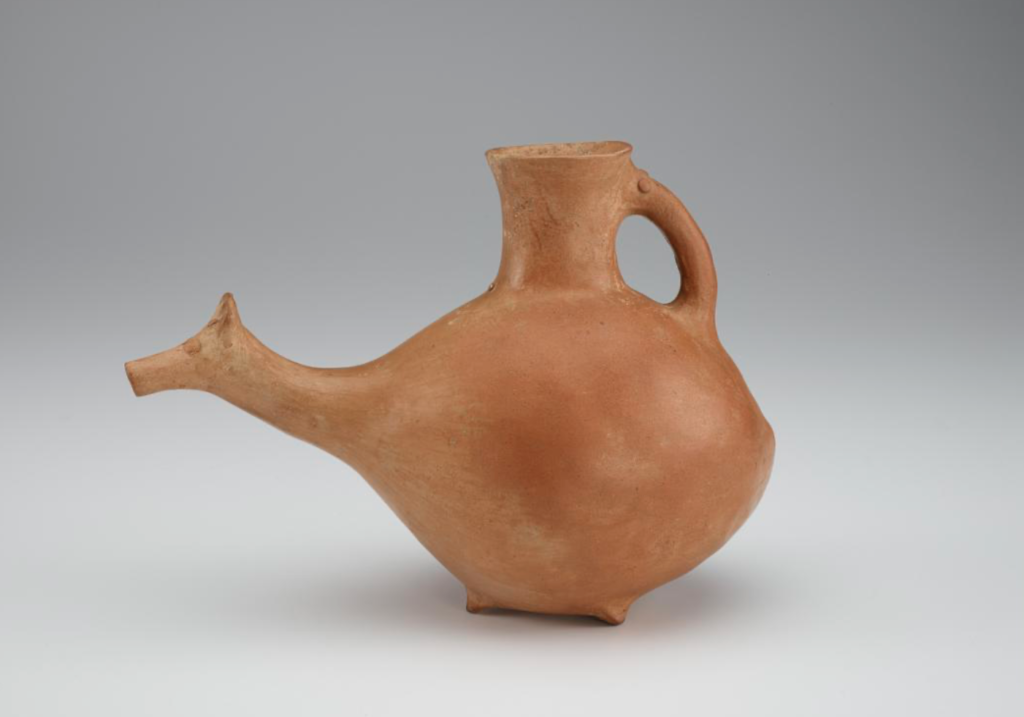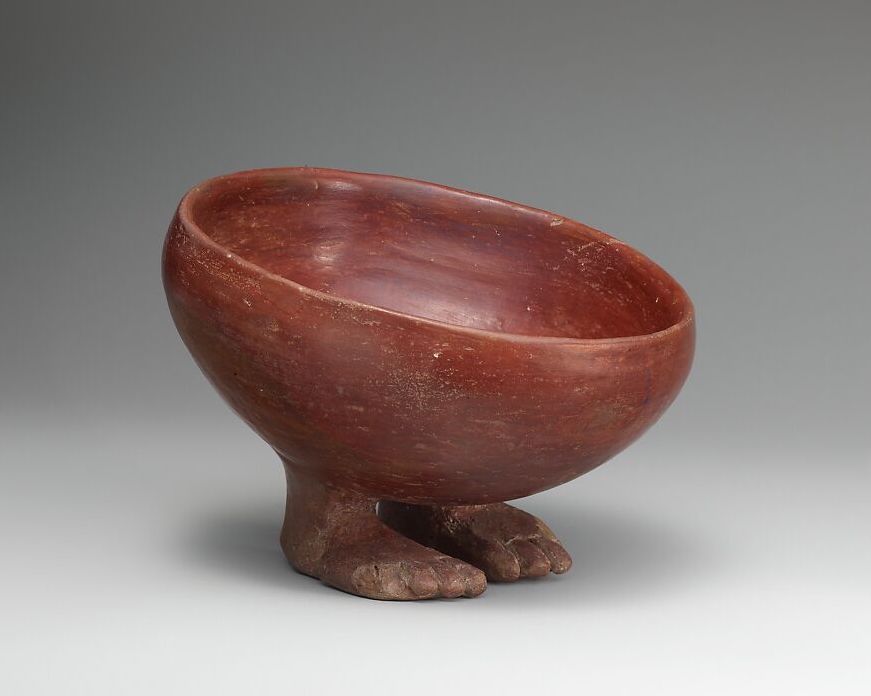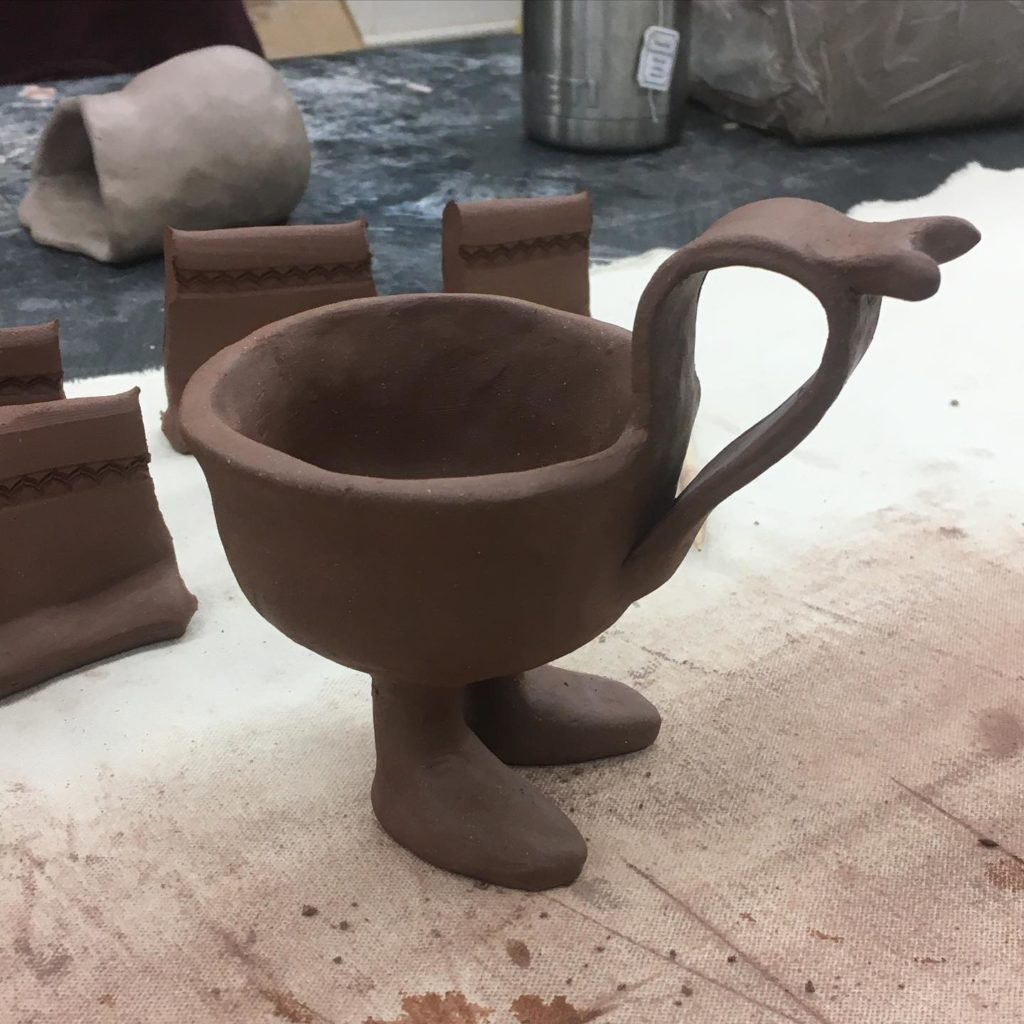I had made one attempt a couple of years ago of a cup with feet and an animal head spout. It fell over at some point after it was bisqued and before I picked it up, and its head popped off, but also its proportions were terrible and its feet awkwardly placed. As I was exploring the sippy cups that had been featured in the lay media articles when Dunne et al. came out, I entered into the wide world of Hallstatt zoomorphic vessels and found many different examples with different proportions, some with 4 legs. Celtic groups in Bronze Age Central Europe (referred to as Urnfield, Hallstatt, and La Tène cultures, among others) were pastoral, and they included a lot of cattle imagery in their material objects. They also added human feet to many of the smaller vessels.
During this period and before, zoomorphic vessels are found pretty much everywhere you look, throughout the world, of varying sizes, sometimes with wheels, in excavations of residences and temples. There are also examples of vessels with human feet, notably a famous Egyptian bowl and an Iranian amphora that ups the ante with shapely ankles as well.





I was already charmed by the Bronze Age sippy cups, but the combination of animal features and human feet really intrigued me, and I decided to start working on the “two human feet” balancing issue with a high-handled bowl similar to a Greek kantharos.


I modeled some needlessly sturdy feet (I hollowed them out, they were so thick), placed one handle, and then didn’t get back to the studio for a while, so rather than try to rehydrate the other side for the matching handle, I just left it with one. The Hallstatt piece is considerably more elegant, with its shaping, but I just wanted to be sure I got the thing to stand. So far so good!

this was bisqued and will not be glazed.
